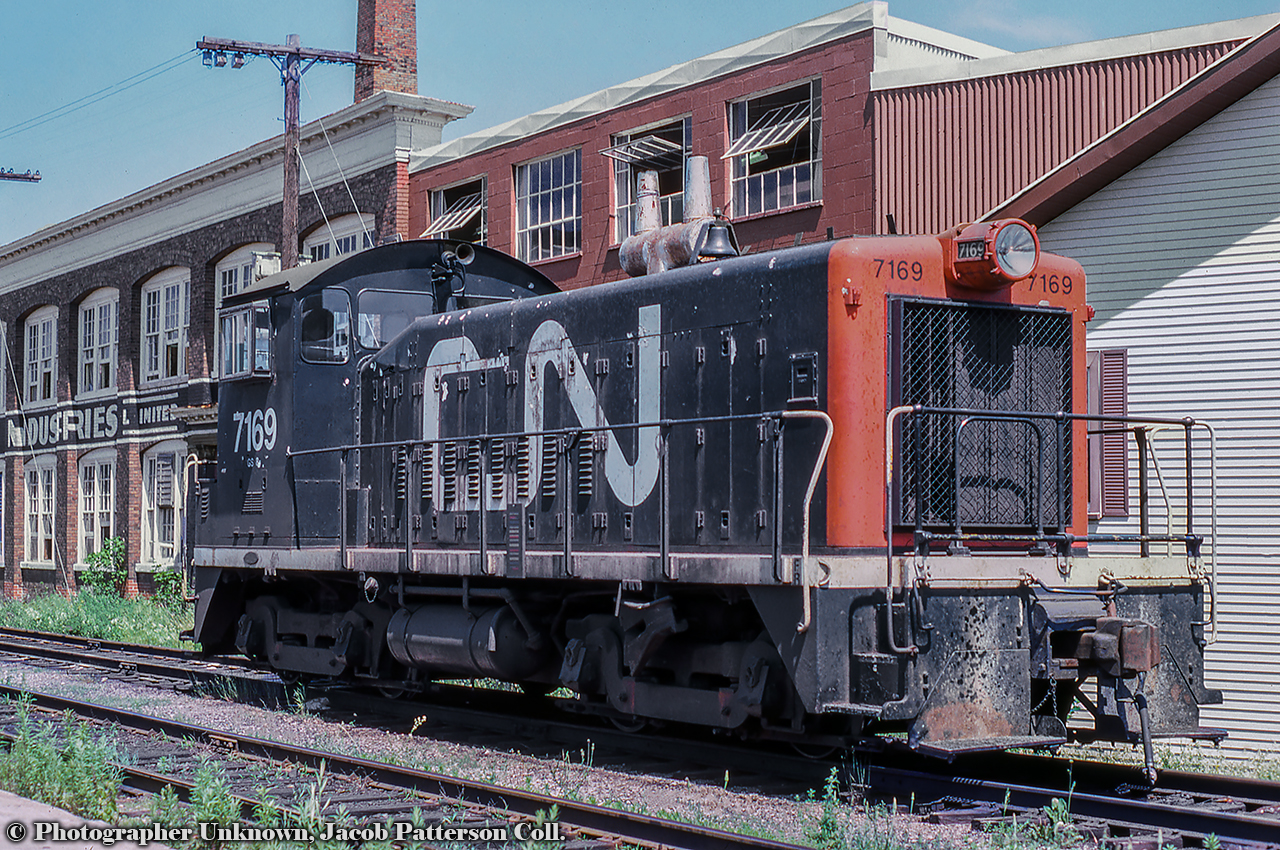|
Caption: The CN Guelph yard power is seen parked in track XW41, the southernmost track across from CN's Guelph station. Power is CN 7169, an 800hp GMD SW8 built in 1951, originally one of the 34 SW8s numbered in the 8500 - 8533 series prior to 1956 renumbering to 7150 - 7183. All would be off the roster by 1989.
Behind the unit sits two buildings, an older wood and timber structure at right at 72 Farquhar Street, and the brick factory on the left at 76 Farquhar Street, both part of Guelph's textile and agriculture history. The "medium" structure at centre was an addition during the 1920s to connect the two main buildings. At right, Guelph's Drill Hall built 1866 served the military for practicing various drills until the 1890s. The armoury would not be built until 1906, directly across the street and still in use today. The site first became part of Guelph's textile manufacturing sector in the early 1890s as part of the shirt making company, Williams, Green & Rome, per an 1892 fire insurance map. By the early 1900s the factory at left had been built and the full site was in use as the Guelph Cotton Mills per a 1907 fire insurance map, and by 1908, taken over by the Louden Machinery Company (the word "Louden" barely visible in this 1908 photo) for the manufacturing of agricultural equipment. The Aspinwall Manufacturing Company would assume operation of the site in 1912 as their only Canadian plant (seen here circa 1915) making equipment for potato farmers, including their automated potato planters, sprayers, cutters, sorters, and weeders. Some examples of their equipment seen here. Per a 1929 fire insurance map, the properties were once again in the textile industry under the Regent Knitting Company, and later by Zephyr Looms and Textiles Inc. in the late 1930s. Zephyr Looms & Textiles worked through the Second World War handling military contracts for uniform articles and other small items. Emerging from the war, the company would rebrand as Textile Industries Ltd. in December 1945, which it would operate as until closing for good in December of 1980. At some point during the 1970s a slight change in the name recognized their location in Guelph on Wyndham Street, as they became known as Wyndham Textile Industries Limited.
Original Photographer Unknown, Jacob Patterson Collection Slide.
|



Further info: brick portion of building demolished 2011 to make way for initial GO expansion in Guelph, clearing the way for a small pick up/drop of area. The “drill hall” white section at right has sat vacant for a number of years as a municipal property and is now undergoing stabilization to allow it to be sold for heritage repurposing in the near future.
At a cost of 5-6 million. Drill hall traded by metrolinx for land near station for future parking garage.
A portion of the hood at the roof line has been juggled around in the shop to mess up the logo.